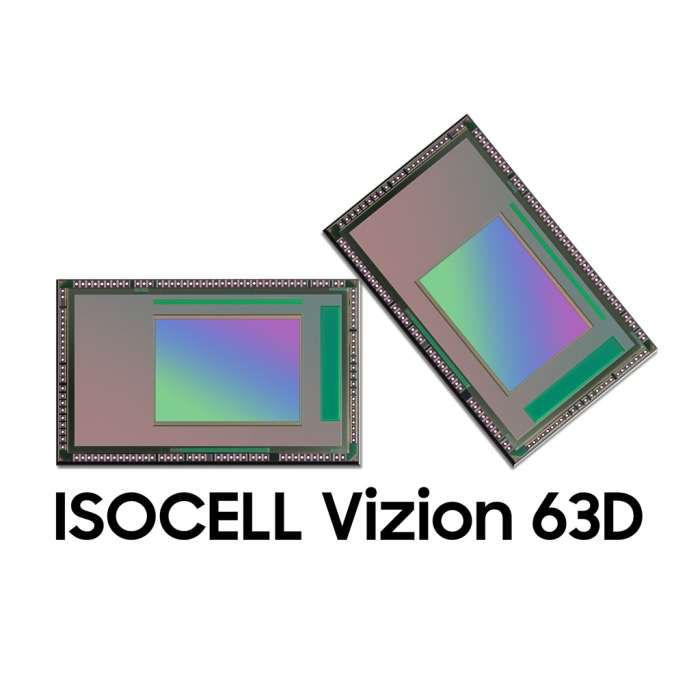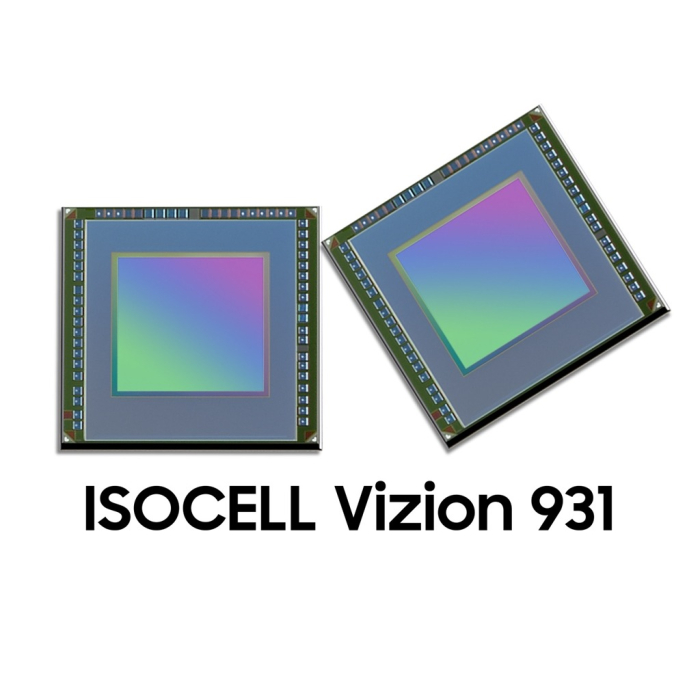Tech, Media & Telecom
Samsung Elec unveils new image sensors for robotics, XR
ISOCELL Vizion 63D captures high-resolution 3D images; ISOCELL Vizion 931 captures dynamic movements with clarity, precision
By Dec 19, 2023 (Gmt+09:00)
3
Min read
Most Read
Hankook Tire buys $1 bn Hanon Systems stake from Hahn & Co.


S.Korea's LS Materials set to boost earnings ahead of IPO process


NPS to hike risky asset purchases under simplified allocation system


Aman, Rosewood, Banyan, IHG rush to open luxury hotels in Seoul


Osstem to buy BrazilŌĆÖs No. 3 dental implant maker Implacil



Samsung Electronics Co., the worldŌĆÖs largest memory chipmaker, on Tuesday introduced new image sensors tailored for advanced content platforms such as robotics and extended reality (XR) to increase its presence in the market.
The South Korean tech giant unveiled two new ISOCELL Vizion sensors ŌĆō the ISOCELL Vizion 63D, a time-of-flight (ToF) sensor, and the ISOCELL Vizion 931, a global shutter sensor. ToF sensors measure distance and depth by calculating the time it takes the emitted light to travel to and from an object, similar to how bats use echolocation to navigate in the dark.
ŌĆ£Engineered with state-of-the-art sensor technologies, SamsungŌĆÖs ISOCELL Vizion 63D and ISOCELL Vizion 931 will be essential in facilitating machine vision for future high-tech applications like robotics and extended reality,ŌĆØ said Lee Haechang, Samsung executive vice president of the next-generation sensor development team.
ŌĆ£Leveraging our rich history in technological innovation, we are committed to driving the rapidly expanding image sensor market forward.ŌĆØ
The ISOCELL Vizion 63Dis ideal for service and industrial robots, XR devices and facial authentication where high-resolution and precise depth measuring are crucial, while the ISOCELL Vizion 931 is well-suited for motion-tracking in XR devices, gaming systems, service and logistics robots as well as drones, Samsung said.
INDUSTRYŌĆÖS FIRST ITOF SENSOR
The ISOCELL Vizion 63D is an indirect ToF (iToF) sensor that measures the phase shift between emitted and reflected light to sense its surroundings in three dimensions, Samsung said. The product is┬Āthe industryŌĆÖs first iToF sensor with an integrated depth-sensing hardware image signal processor (ISP), according to the company
With its one-chip design, it can precisely capture 3D depth information without the help of another chip, reducing system power consumption by up to 40% compared to the previous ISOCELL Vizion 33D product, Samsung said. The sensor can also process images at up to 60 frames per second in quarter video graphics array (QVGA) resolution, which is a high-demand display resolution used in commercial and industrial markets, the company said.
Thanks to backside scattering technology (BST) that enhances light absorption, the ISOCELL Vizion 63D sensor boasts the highest level of quantum efficiency in the industry, reaching 38% at an infrared light wavelength of 940 nanometers (nm), according to Samsung. This enables enhanced light sensitivity and reduced noise, resulting in sharper image quality with minimal motion blur, the company said.
The new sensor supports both the flood lighting mode for high-resolution at short range and the spot lighting modes for long range, significantly doubling its measurable distance range from its predecessorŌĆÖs five meters to 10, Samsung added.

OPTIMIZED TO CAPTURE DYNAMIC MOVEMENTS
The ISOCELL Vizion 931 is a global shutter image sensor tailored to capture rapid movements without the so-called Jello effect, or the wobble experienced when the camera sensor vibrates or shakes while recording, Samsung said.
Unlike rolling shutter sensors that scan the scene line by line from top to bottom in a ŌĆ£rollingŌĆØ manner, global shutter sensors capture the entire scene at once, similar to how human eyes see, according to the company. That allows the ISOCELL Vizion 931 to capture sharp and undistorted images of moving objects. It added.
Designed with a one-to-one ratio VGA resolution that packs more pixels in a smaller form factor, the new sensor is optimal for iris recognition, eye tracking as well as facial and gesture detection in head-mounted display devices like XR headsets, Samsung said.
The ISOCELL Vizion 931 also delivers 60% at 850 nm infrared light wavelength, the industryŌĆÖs highest level of quantum efficiency, by incorporating front deep trench isolation (FDTI), which places an insulation layer between pixels to maximize light absorption, and the BST method used for the ISOCELL Vizion 63D, the company said.
The product supports a multi-drop that can connect up to four cameras to the application processor using a single wire. With minimal wiring required, the sensor provides greater design flexibility for device manufacturers, according to the company.
Samsung is currently providing samples of the two new sensors to global original equipment manufacturers.
Write to Ye-Rin Choi at rambutan@hankyung.com
┬Ā
Jongwoo Cheon edited this article.
More to Read
-
 ElectronicsSamsung unveils 200-megapixel image sensor for Galaxy S23 Ultra
ElectronicsSamsung unveils 200-megapixel image sensor for Galaxy S23 UltraJan 17, 2023 (Gmt+09:00)
1 Min read -
 Tech, Media & TelecomSamsung to fuel rivalry with Sony in mobile image sensor market
Tech, Media & TelecomSamsung to fuel rivalry with Sony in mobile image sensor marketJun 24, 2022 (Gmt+09:00)
2 Min read -
 Korean chipmakersSamsung Electronics to raise image sensor output to overtake Sony
Korean chipmakersSamsung Electronics to raise image sensor output to overtake SonyDec 09, 2020 (Gmt+09:00)
3 Min read
Comment 0
LOG IN


